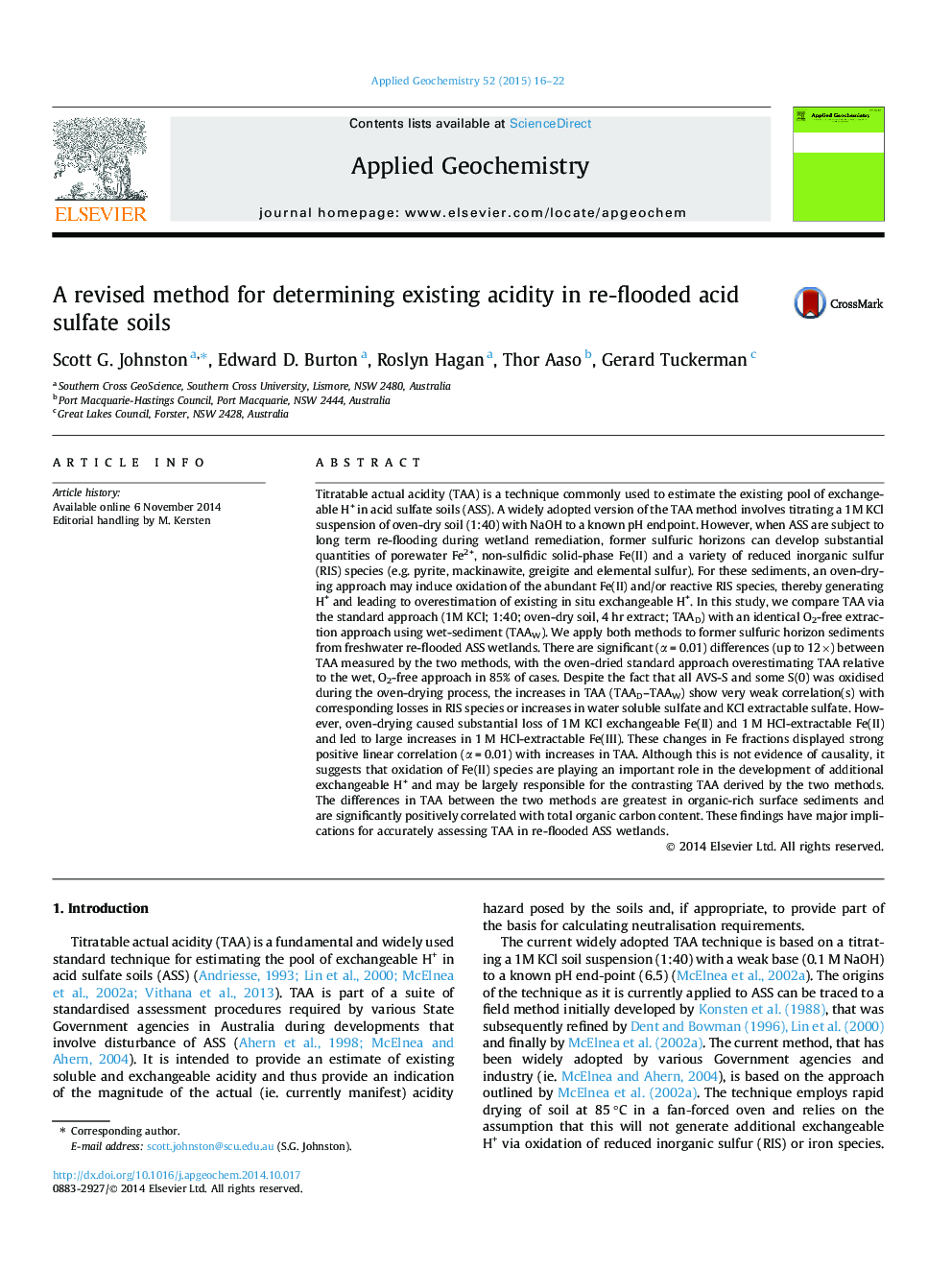| Article ID | Journal | Published Year | Pages | File Type |
|---|---|---|---|---|
| 4435711 | Applied Geochemistry | 2015 | 7 Pages |
•We assess an alternate method for TAA (H+) in re-flooded acid sulfate soil.•The method uses wet sediment with anoxic extraction and avoids oven-drying.•The method is free from false-positive TAA that undermines the standard approach.•Overestimated TAA is poorly correlated with loss in RIS species/gain in SO42−.•Overestimated TAA appears related to oven-drying induced changes in Fe speciation.
Titratable actual acidity (TAA) is a technique commonly used to estimate the existing pool of exchangeable H+ in acid sulfate soils (ASS). A widely adopted version of the TAA method involves titrating a 1M KCl suspension of oven-dry soil (1:40) with NaOH to a known pH endpoint. However, when ASS are subject to long term re-flooding during wetland remediation, former sulfuric horizons can develop substantial quantities of porewater Fe2+, non-sulfidic solid-phase Fe(II) and a variety of reduced inorganic sulfur (RIS) species (e.g. pyrite, mackinawite, greigite and elemental sulfur). For these sediments, an oven-drying approach may induce oxidation of the abundant Fe(II) and/or reactive RIS species, thereby generating H+ and leading to overestimation of existing in situ exchangeable H+. In this study, we compare TAA via the standard approach (1M KCl; 1:40; oven-dry soil, 4 hr extract; TAAD) with an identical O2-free extraction approach using wet-sediment (TAAW). We apply both methods to former sulfuric horizon sediments from freshwater re-flooded ASS wetlands. There are significant (α = 0.01) differences (up to 12×) between TAA measured by the two methods, with the oven-dried standard approach overestimating TAA relative to the wet, O2-free approach in 85% of cases. Despite the fact that all AVS-S and some S(0) was oxidised during the oven-drying process, the increases in TAA (TAAD–TAAW) show very weak correlation(s) with corresponding losses in RIS species or increases in water soluble sulfate and KCl extractable sulfate. However, oven-drying caused substantial loss of 1M KCl exchangeable Fe(II) and 1 M HCl-extractable Fe(II) and led to large increases in 1 M HCl-extractable Fe(III). These changes in Fe fractions displayed strong positive linear correlation (α = 0.01) with increases in TAA. Although this is not evidence of causality, it suggests that oxidation of Fe(II) species are playing an important role in the development of additional exchangeable H+ and may be largely responsible for the contrasting TAA derived by the two methods. The differences in TAA between the two methods are greatest in organic-rich surface sediments and are significantly positively correlated with total organic carbon content. These findings have major implications for accurately assessing TAA in re-flooded ASS wetlands.
